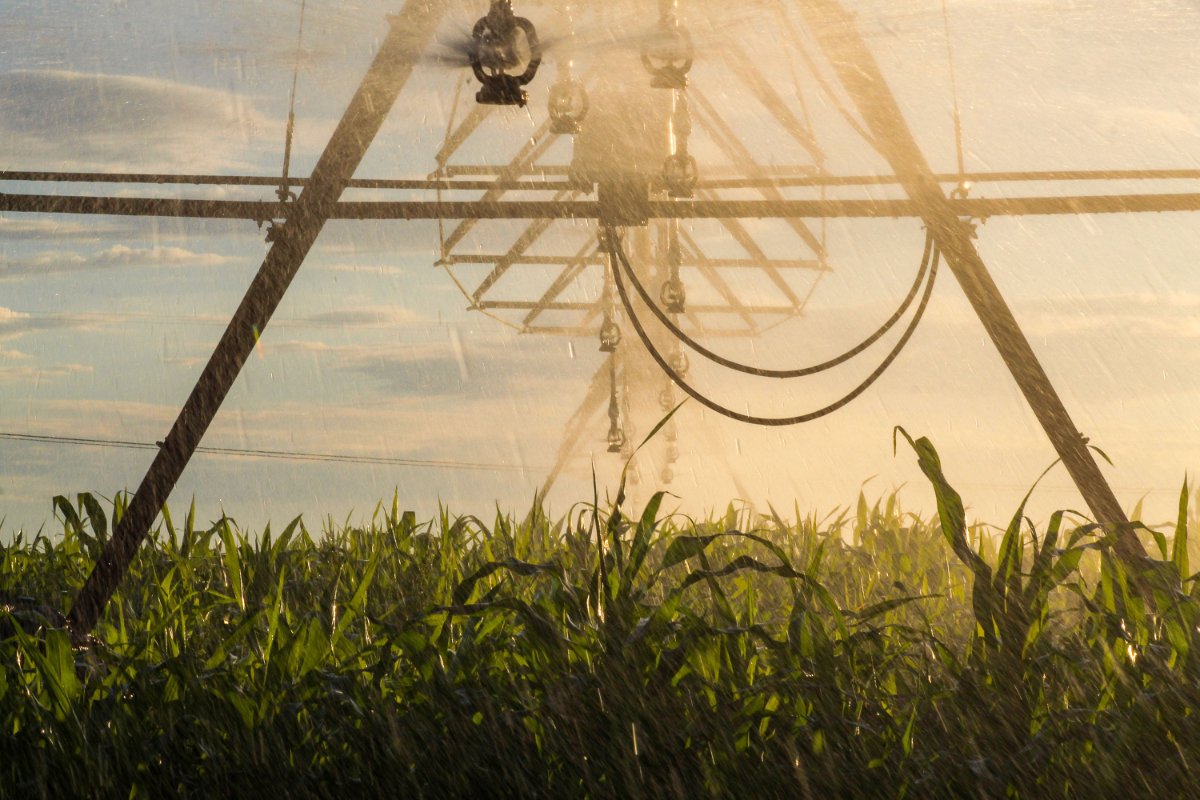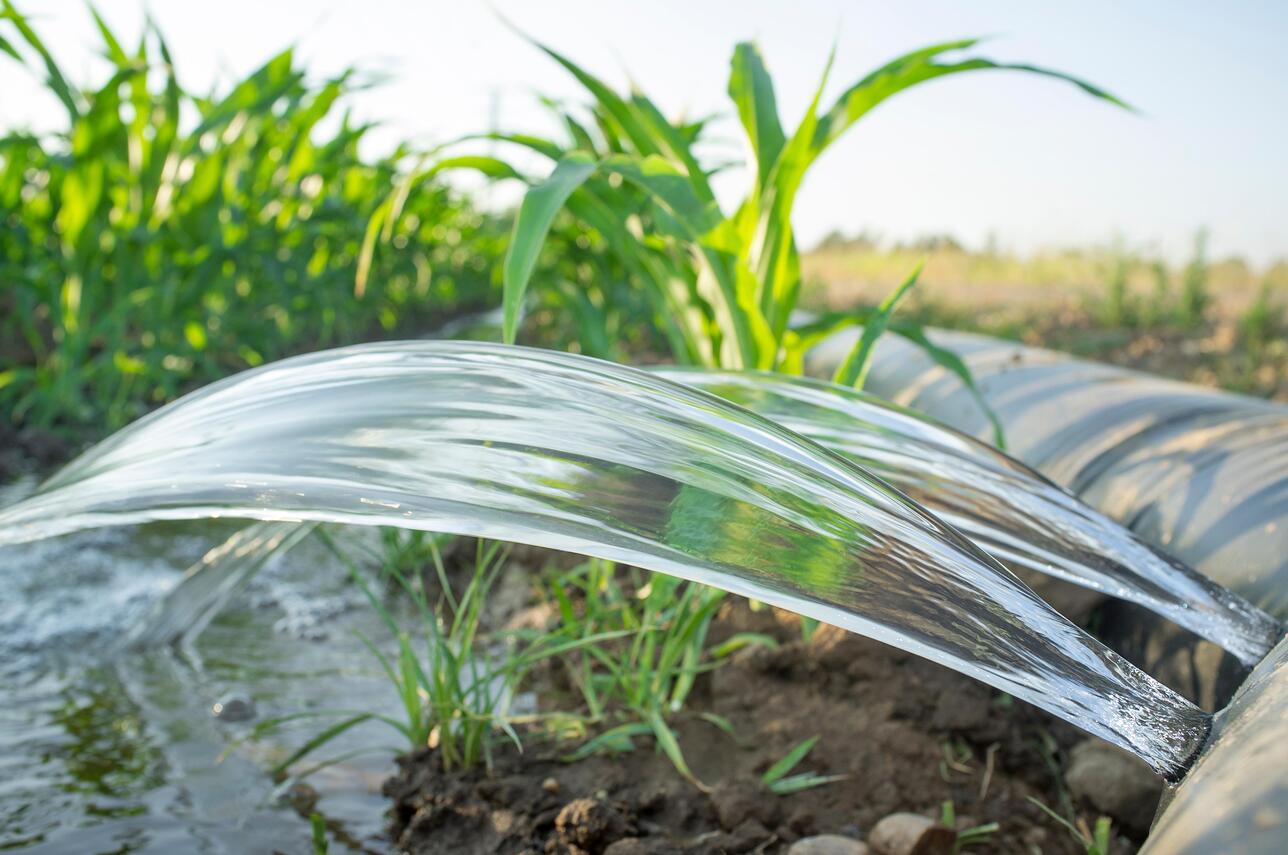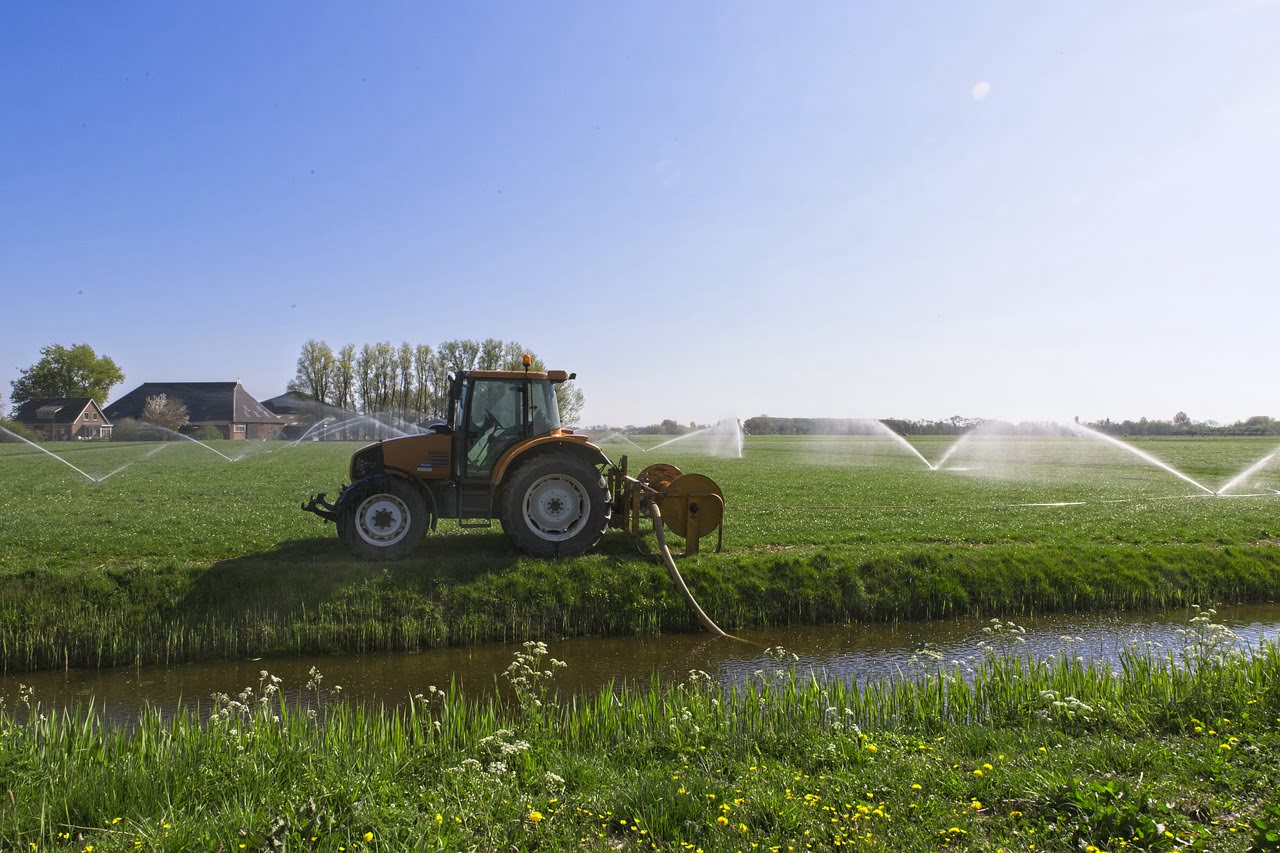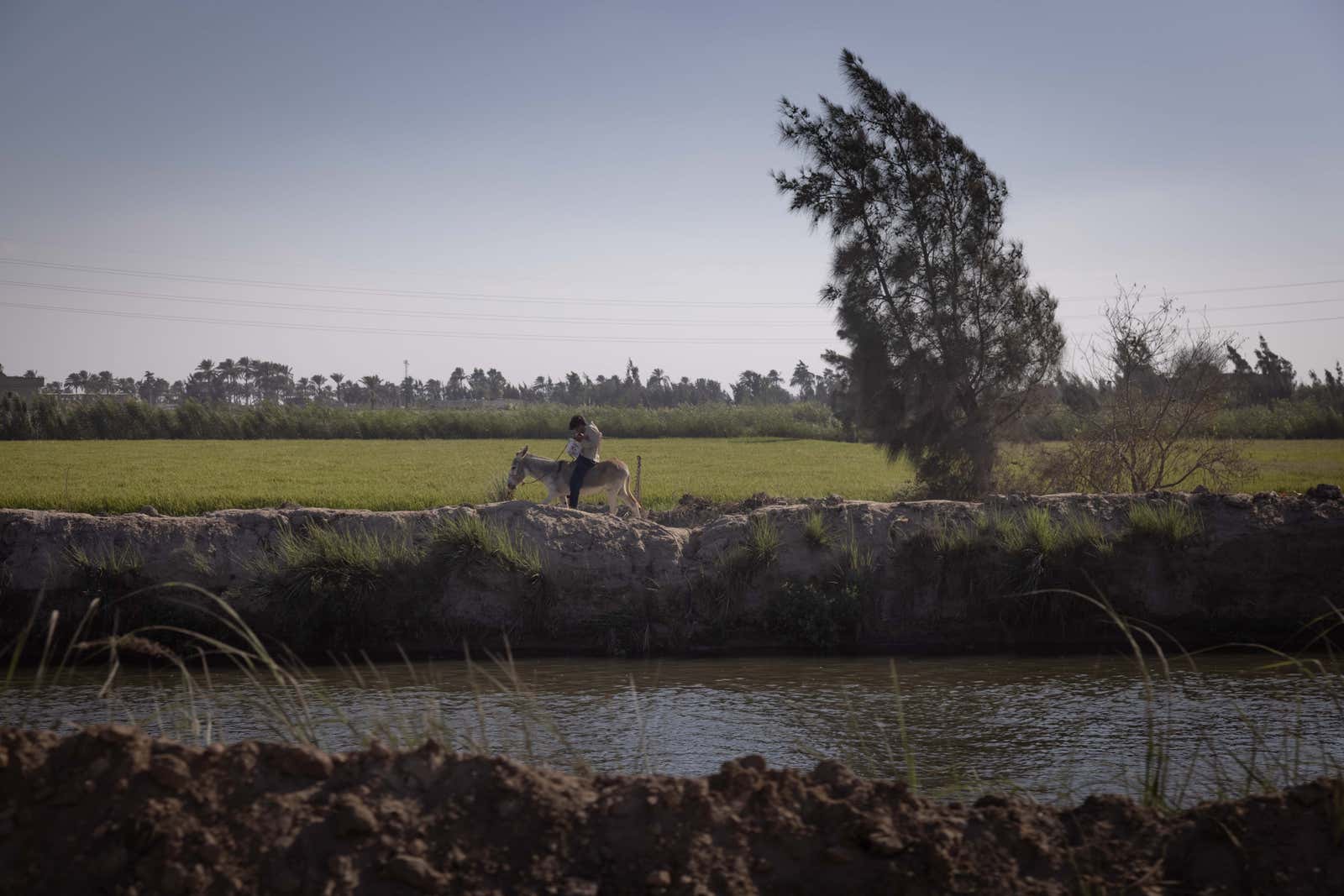Home>Gardening News and Trends>Latest News>Why Did The Southwest Peoples Have To Develop Irrigation Systems


Latest News
Why Did The Southwest Peoples Have To Develop Irrigation Systems
Published: November 20, 2023
Discover the latest news on why the Southwest peoples developed irrigation systems and how it transformed their civilization. Uncover the reasons behind this remarkable feat!
(Many of the links in this article redirect to a specific reviewed product. Your purchase of these products through affiliate links helps to generate commission for Chicagolandgardening.com, at no extra cost. Learn more)
Table of Contents
- Introduction
- The Importance of Irrigation Systems for Southwest Peoples
- Climate Conditions in the Southwest
- Water Sources in the Southwest
- Techniques and Methods of Irrigation
- Role of Irrigation Systems in Agriculture
- Social and Cultural Implications of Irrigation Systems
- Challenges and Limitations of Irrigation Systems in the Southwest
- Impact on the Development and Sustainability of Southwest Civilizations
- Conclusion
Introduction
The development of irrigation systems played a crucial role in the growth and prosperity of the Southwest peoples. For centuries, these indigenous civilizations flourished in an arid and often unpredictable environment, relying on innovative techniques to harness water and sustain their agricultural practices. The Southwest region, encompassing areas such as present-day Arizona, New Mexico, Colorado, and Utah, was characterized by a dry climate, limited rainfall, and scarce natural water sources. In order to overcome these challenges and ensure the survival of their communities, the Southwest peoples had to develop sophisticated irrigation systems.
The need for irrigation was prompted by the necessity to cultivate crops and ensure a stable food supply. As hunter-gatherer societies transitioned to settled agricultural communities, the reliance on seasonal rainfall became insufficient. By constructing canals, ditches, and intakes, the Southwest peoples were able to divert and control the flow of water to irrigate their fields more effectively. This allowed them to cultivate a diverse range of crops, including maize, beans, squash, and cotton. The availability of a consistent water supply not only supported their agricultural activities but also contributed to the development of a thriving and complex civilization.
Moreover, irrigation systems had broader implications beyond just agriculture. The establishment of these systems required extensive knowledge of hydrology, engineering, and land management, demonstrating the innovative and adaptive nature of the Southwest peoples. The construction and maintenance of canals and reservoirs often involved communal efforts, fostering cooperation and social cohesion within the communities. Additionally, irrigation allowed for a higher population density, as larger areas of land could be cultivated. This led to an increase in trade, specialization of labor, and the emergence of complex political and economic systems.
The Importance of Irrigation Systems for Southwest Peoples
The development and utilization of irrigation systems were of utmost importance for the Southwest peoples. These indigenous civilizations heavily relied on agriculture as a means of sustenance and economic stability. In the arid climate of the Southwest region, where rainfall was infrequent and unpredictable, irrigation systems provided a crucial solution to ensure the successful cultivation of crops.
By harnessing water from rivers, streams, and underground sources, the Southwest peoples were able to control the distribution of water to their fields, allowing for efficient irrigation. This not only improved the yield and quality of crops but also provided a steady and reliable food supply throughout the year. With irrigation, the Southwest peoples had the ability to cultivate a diverse range of crops, including staple grains like maize, as well as beans, squash, and cotton, which were vital for trade and commerce.
The establishment of irrigation systems had a significant impact on the development and advancement of Southwest civilizations. The availability of water transformed previously inhospitable areas into fertile agricultural lands, which in turn attracted more settlements and contributed to the growth of population centers. The surplus food production resulting from effective irrigation allowed for the specialization of labor, leading to the emergence of artisans, craftsmen, and traders.
Furthermore, irrigation systems played a crucial role in shaping the cultural and social fabric of the Southwest peoples. The construction and maintenance of canals and ditches required cooperation and collective efforts, fostering a sense of community and resilience. Water management became an integral part of their rituals, ceremonies, and belief systems, highlighting the significance of water in their daily lives.
Overall, the development of irrigation systems was a transformative achievement for the Southwest peoples. The ability to control and utilize water resources for agriculture not only ensured their survival but also allowed for the growth and prosperity of their civilizations. Through their ingenuity and adaptability, the Southwest peoples effectively confronted the challenges posed by their environment, securing their place in history as innovative agriculturalists and engineers.
Climate Conditions in the Southwest
The climate of the Southwest region was characterized by arid and dry conditions, presenting significant challenges for agricultural practices. The region encompasses parts of present-day Arizona, New Mexico, Colorado, and Utah, experiencing hot summers, mild winters, and limited rainfall. The aridity of the area is mainly due to its geographical features, such as the presence of deserts and mountain ranges, which affect the distribution of rainfall.
Due to the unpredictable nature of rainfall in the Southwest, relying solely on natural precipitation for crop cultivation was not a viable option. The limited rainfall that did occur was often concentrated in short periods of time and unable to sustain crops throughout the year. Therefore, the Southwest peoples had to devise innovative strategies to obtain and conserve water for agricultural purposes.
Climate variability in the Southwest meant that droughts and periods of water scarcity were common. When combined with the growing population and increasing demand for food, the need for reliable and efficient irrigation systems became even more crucial. The agricultural practices and livelihoods of the Southwest peoples were heavily dependent on their ability to effectively manage water resources.
Despite the challenging climate conditions, the Southwest peoples successfully adapted to their environment by developing sophisticated irrigation systems to address the water scarcity issue. These systems allowed them to control and distribute water to their fields, ensuring the survival and prosperity of their communities. Through their ingenuity and resourcefulness, they were able to overcome the limitations imposed by the arid Southwest climate.
In addition to the challenges posed by aridity, the Southwest region also experienced temperature extremes. Summers were hot and often marked by high temperatures, leading to increased evaporation rates and further reducing the availability of water. These temperature conditions required the Southwest peoples to manage water resources efficiently and ensure that irrigation techniques were designed to minimize water loss.
Overall, the climate conditions in the Southwest were harsh and posed significant obstacles to agricultural activities. The limited rainfall, coupled with high temperatures and the occurrence of droughts, necessitated the development of innovative irrigation systems for the sustainable cultivation of crops. The Southwest peoples’ mastery of water management techniques allowed them to thrive and build prosperous civilizations in an environment that might have otherwise been unforgiving.
Water Sources in the Southwest
The Southwest region, with its arid climate, posed a significant challenge for the Southwest peoples in terms of accessing water sources to sustain their agricultural practices. However, despite the limited availability of natural water sources, the ingenious civilizations of the Southwest were able to identify and utilize various water sources to meet their needs.
Rivers played a crucial role as a primary water source for the Southwest peoples. The Colorado River, Rio Grande, and Gila River were essential lifelines, providing a consistent flow of water that could be harnessed for irrigation. The Southwest peoples developed intricate networks of canals and channels to divert water from these rivers to their fields, ensuring a reliable water supply for agriculture.
In addition to rivers, the Southwest also had access to groundwater sources. This underground water was obtained through wells and springs, providing a reliable and steady supply of water for irrigation. The Southwest peoples were adept at locating and accessing these groundwater sources, enabling them to irrigate their fields even in times of drought or limited surface water availability.
The construction of reservoirs and storage systems was another method employed by the Southwest peoples to maximize their water resources. By capturing and storing rainwater or diverting excess flow from rivers, they were able to create reservoirs that could be used for irrigation during times of water scarcity. These reservoirs served as crucial water storage and distribution points, allowing for more efficient water management and utilization.
Furthermore, the Southwest peoples also demonstrated resourcefulness in capturing and utilizing rainwater. Due to the infrequent rainfall, every drop of rain was valuable and had to be maximized. They constructed systems to collect rainwater runoff, such as cisterns and catchment basins, ensuring that no water was wasted and that it was effectively used for irrigation purposes.
The utilization of diverse water sources, including rivers, groundwater, reservoirs, and rainwater, highlights the adaptability and ingenuity of the Southwest peoples. By capitalizing on every available water source, they were able to establish sustainable agricultural practices and cultivate a variety of crops that supported their communities’ growth and prosperity.
Techniques and Methods of Irrigation
The Southwest peoples developed and utilized a range of innovative techniques and methods to effectively irrigate their fields in the arid landscape. These techniques were designed to maximize the use of water resources and improve agricultural productivity, ultimately contributing to the growth and success of their civilizations.
One of the primary methods of irrigation employed by the Southwest peoples was flood irrigation. This technique involved diverting water from rivers or reservoirs onto fields through a network of canals and ditches. By flooding the fields, the soil would soak up the water, providing the necessary moisture for plant growth. Flood irrigation was particularly effective for crops such as maize and cotton, which required a significant amount of water.
Another commonly used method was furrow irrigation. In this technique, small channels or furrows were created between rows of crops. Water was then introduced into the furrows, allowing it to slowly infiltrate the soil and reach the plant roots. Furrow irrigation facilitated water conservation by minimizing runoff and evaporation, making it an efficient method for water management in the arid Southwest.
Drip irrigation was a more intricate and sophisticated technique employed by the Southwest peoples. This method involved the use of a system of tubes or pipes with small holes or emitters, delivering water directly to the base of the plants. Drip irrigation was highly efficient, as it minimized water loss through evaporation or runoff. This technique was especially useful for crops that required precise and controlled watering, such as vegetables and fruit trees.
The Southwest peoples also practiced terracing, a technique that involved creating flat fields on the slopes of hills and mountains. This method allowed water to be evenly distributed across the terraced fields, preventing erosion and maximizing water usage. The terraced fields not only created suitable conditions for agriculture but also contributed to the conservation of precious water resources.
Furthermore, the management and maintenance of irrigation systems were crucial for optimal water utilization. The Southwest peoples established a system of governance and community cooperation to ensure equitable access to water and the fair distribution of irrigation resources. This enabled efficient water management and maintenance of the irrigation infrastructure.
The techniques and methods of irrigation employed by the Southwest peoples were a testament to their resourcefulness and ingenuity. Through their innovative approaches, they were able to adapt to the arid climate and maximize the use of limited water resources, successfully cultivating crops and sustaining their communities’ livelihoods.
Role of Irrigation Systems in Agriculture
Irrigation systems played a pivotal role in the development and success of agriculture among the Southwest peoples. These systems were essential for mitigating the challenges posed by the arid climate and limited water resources, allowing for the sustainable cultivation of crops and the growth of thriving agricultural economies.
Firstly, irrigation systems provided the Southwest peoples with a consistent and reliable water supply for their crops. By controlling the distribution of water through canals, ditches, and reservoirs, they were able to ensure that their fields received the necessary moisture for optimal growth. This facilitated the cultivation of a wide variety of crops, including maize, beans, squash, and cotton, which formed the foundation of the Southwest peoples’ agricultural practices.
Additionally, irrigation systems contributed to increased agricultural productivity and crop yields. By providing a steady water supply, the Southwest peoples were able to extend the growing season and cultivate crops year-round, reducing the risk of crop failure due to drought or inadequate rainfall. This led to higher agricultural outputs, enabling the communities to meet their food needs and generate surpluses for trade and commerce.
Moreover, irrigation systems allowed for the cultivation of crops that were otherwise unsuitable for the arid Southwest environment. The availability of water through irrigation enabled the Southwest peoples to expand their agricultural repertoire and grow crops that required more moisture. This diversification of crops not only improved their overall food security but also stimulated economic growth by creating opportunities for trade and specialization.
Irrigation systems also played a crucial role in supporting population growth and settlement expansion. The ability to cultivate larger areas of land with reliable water sources allowed for increased food production, which in turn could sustain larger populations. This led to the establishment of thriving communities and the development of complex social, political, and economic systems within the Southwest civilizations.
Furthermore, irrigation systems influenced the landscapes and environments of the Southwest region. The construction of canals, terraces, and other irrigation infrastructure contributed to alterations in the natural water flow and soil composition. Over time, the irrigation practices enhanced soil fertility and improved the overall ecological balance, creating an environment conducive to sustaining agricultural activities.
In summary, irrigation systems were integral to the success of agriculture among the Southwest peoples. They enabled the cultivation of diverse crops, increased agricultural productivity and yields, supported population growth, and influenced the landscapes of the region. The development and maintenance of irrigation systems showcased the resourcefulness and adaptability of the Southwest peoples, allowing them to overcome the limitations imposed by the arid environment and build prosperous agricultural economies.
Social and Cultural Implications of Irrigation Systems
The establishment of irrigation systems in the Southwest had far-reaching social and cultural implications for the indigenous communities. Beyond their practical benefits in agriculture, these systems played a significant role in shaping the social fabric, cultural traditions, and overall way of life of the Southwest peoples.
Irrigation infrastructure required collective efforts, community cooperation, and shared responsibilities. The construction and maintenance of canals, ditches, and reservoirs necessitated communal labor, which fostered a sense of unity and cooperation among the Southwest peoples. This communal aspect of irrigation systems not only contributed to the success of agriculture but also created strong social bonds and a sense of shared identity.
Water management and irrigation became integral parts of the cultural and religious beliefs of the Southwest civilizations. Water was revered as a sacred resource, and its careful conservation and efficient usage were seen as essential for the well-being and prosperity of the communities. Rituals, ceremonies, and traditions were often associated with water, emphasizing its vital role in daily life and the interconnectedness of nature and human existence.
The availability of water through irrigation systems also had a significant impact on population density and settlement patterns in the Southwest. With reliable and controlled water sources, communities were able to support larger populations and establish permanent settlements. This led to the development of complex social structures and the emergence of economic specialization, as individuals could focus on specialized tasks such as farming, craftsmanship, and trade.
Irrigation systems facilitated economic development and trade within and between Southwest civilizations. The surplus agricultural produce resulting from effective irrigation allowed for the development of marketplaces and the exchange of goods. Trade networks expanded as communities with different agricultural specialties were able to exchange their surplus crops, fostering economic growth, and cultural exchange.
Moreover, irrigation systems allowed for the growth and flourishing of arts, crafts, and cultural expressions among the Southwest peoples. With stable and prosperous agricultural practices, individuals had the opportunity to pursue artistic endeavors, creating intricate pottery, textiles, and artwork that reflected their unique cultural heritage. Irrigation systems, therefore, not only sustained communities’ physical well-being but also enriched their cultural and artistic traditions.
In summary, irrigation systems in the Southwest had profound social and cultural implications. They fostered communal cooperation, played a central role in cultural beliefs and rituals, influenced settlement patterns and population growth, facilitated economic development and trade, and nurtured artistic and cultural expressions. The impact of these irrigation systems extended far beyond agriculture, shaping the social and cultural landscape of the Southwest civilizations.
Challenges and Limitations of Irrigation Systems in the Southwest
While irrigation systems were instrumental in the success of agriculture among the Southwest peoples, they also faced various challenges and limitations inherent to the arid environment. These challenges required constant innovation and adaptation in order to overcome the obstacles and maintain the sustainability of the irrigation systems.
One of the primary challenges was the scarcity and unpredictability of water sources. Droughts, periodic water shortages, and variations in river flows posed significant challenges for the Southwest peoples in managing their irrigation systems. The reliance on limited water supplies meant that careful and efficient water management was essential to ensure the success of agriculture.
Another challenge was the potential for salinization of the soil. The use of irrigation water can lead to the accumulation of salt in the soil over time. Salinization, if left unaddressed, can negatively impact crop growth and reduce agricultural productivity. The Southwest peoples had to develop strategies to minimize salinization, such as enhancing drainage systems and implementing crop rotation practices to mitigate the effects of high salt content in the soil.
Furthermore, the maintenance and upkeep of the irrigation infrastructure posed ongoing challenges. Canals, ditches, and reservoirs required regular cleaning and repair to ensure the efficient flow of water. Sediment buildup, erosion, and structural damage were constant threats that needed to be addressed to prevent disruptions in water distribution. The Southwest peoples had to allocate resources and labor to maintain the irrigation systems, which often required community cooperation and collective efforts.
Additionally, the efficient use of water was crucial due to its scarcity in the arid Southwest environment. Water loss through evaporation, seepage, and inefficient distribution techniques needed to be minimized. The Southwest peoples had to continually refine their knowledge and practices to ensure the most effective and water-efficient methods of irrigation, such as implementing drip irrigation or improving channel designs to reduce water loss.
Moreover, as agriculture expanded and more land was brought under cultivation, conflicts over water rights could arise. The allocation and equitable distribution of water resources among different communities or regions could be a source of tension. Disputes over water usage and conflicts over rights to access water resources necessitated the development of governance structures and legal systems to manage and resolve such issues.
Despite these challenges and limitations, the Southwest peoples exhibited remarkable resourcefulness and adaptability in addressing the issues associated with irrigation systems. Their continuous innovations and sustainable practices allowed them to overcome these obstacles, ensuring the viability and longevity of their agricultural endeavors.
Impact on the Development and Sustainability of Southwest Civilizations
The development and widespread adoption of irrigation systems had a profound impact on the growth, development, and sustainability of the Southwest civilizations. These innovative systems revolutionized agricultural practices, stimulated economic growth, and contributed to the cultural and social advancements of the ancient indigenous peoples.
Irrigation systems played a central role in supporting the expansion of settled agricultural communities in the arid Southwest. The ability to control and distribute water resources allowed for the cultivation of larger areas of land, leading to increased food production and population growth. This, in turn, supported the establishment of complex social structures, including hierarchical systems and specialized divisions of labor.
The availability of reliable water sources through irrigation systems enabled the Southwest civilizations to cultivate a diverse range of crops. Beyond meeting the basic food needs of the communities, this abundance of agricultural produce created surpluses that could be traded with neighboring regions. Trade networks flourished, facilitating the exchange of goods, ideas, and cultural influences, fostering economic development and interconnectedness.
Moreover, the sustainable agricultural practices made possible by irrigation systems provided the foundation for the long-term sustainability and resilience of the Southwest civilizations. The development of water management techniques, such as terracing and canal construction, enhanced soil fertility, reduced erosion, and conserved water resources. These environmentally conscious practices contributed to the overall ecological balance, ensuring the continuation of agriculture in the arid Southwest for generations to come.
The growth of agriculture and the surplus food production supported by irrigation systems also played a crucial role in the emergence of social and political hierarchies within the Southwest civilizations. Those who possessed the knowledge and skill in water management often held positions of influence and power. The leadership and management of irrigation systems brought forth a class of individuals responsible for overseeing the distribution of water, resolving conflicts, and overseeing the functioning of the agricultural economy.
The impact of irrigation systems extended beyond agriculture and economy. They intertwined with the spiritual and cultural beliefs of the Southwest peoples. Water, seen as a sacred resource, was incorporated into religious practices, rituals, and mythologies. The construction and maintenance of irrigation systems themselves became part of the cultural identity and communal unity, fostering a sense of belonging and shared responsibility within the communities.
In summary, irrigation systems had a transformative impact on the development and sustainability of Southwest civilizations. They facilitated the expansion of settlement, the growth of population, and the emergence of complex social structures. By ensuring a stable food supply, irrigation systems fueled economic growth, trade networks, and cultural exchange. These systems also promoted sustainable agricultural practices and formed an integral part of the social, cultural, and spiritual fabric of the Southwest civilizations.
Conclusion
The development and utilization of irrigation systems were vital for the success and prosperity of the Southwest civilizations. In an arid and unpredictable environment, the Southwest peoples showed remarkable ingenuity and resourcefulness in overcoming the challenges posed by limited water resources. Through the construction of canals, ditches, and reservoirs, they were able to control and distribute water, ensuring the sustainable cultivation of crops and the growth of thriving agricultural economies.
Irrigation systems had multifaceted impacts on the Southwest civilizations. They facilitated the growth of settled communities, supported population expansion, and stimulated economic development through increased agricultural productivity and surplus food production. These systems also influenced social and cultural aspects, fostering communal cooperation, shaping cultural beliefs, and contributing to the emergence of complex social structures.
Furthermore, irrigation systems played a crucial role in environmental sustainability, enhancing soil fertility, conserving water resources, and promoting long-term agricultural viability. This allowed the Southwest civilizations to thrive in an otherwise challenging and arid landscape, leaving a lasting legacy of innovation and resilience.
The Southwest peoples’ mastery of water management techniques and their ability to adapt to the unique climatic conditions of the region demonstrated their deep understanding of their natural environment. By harnessing water and implementing efficient irrigation systems, they not only secured their survival but also built prosperous civilizations that thrived for centuries.
In conclusion, the development of irrigation systems in the Southwest was a testament to the Southwest peoples’ ingenuity, adaptability, and cultural richness. These systems played a pivotal role in the growth and sustainability of their civilizations, shaping their social, economic, and cultural landscapes. The legacy of their irrigation practices continues to inspire and inform modern-day agricultural practices, highlighting the enduring impact of their innovative techniques.









